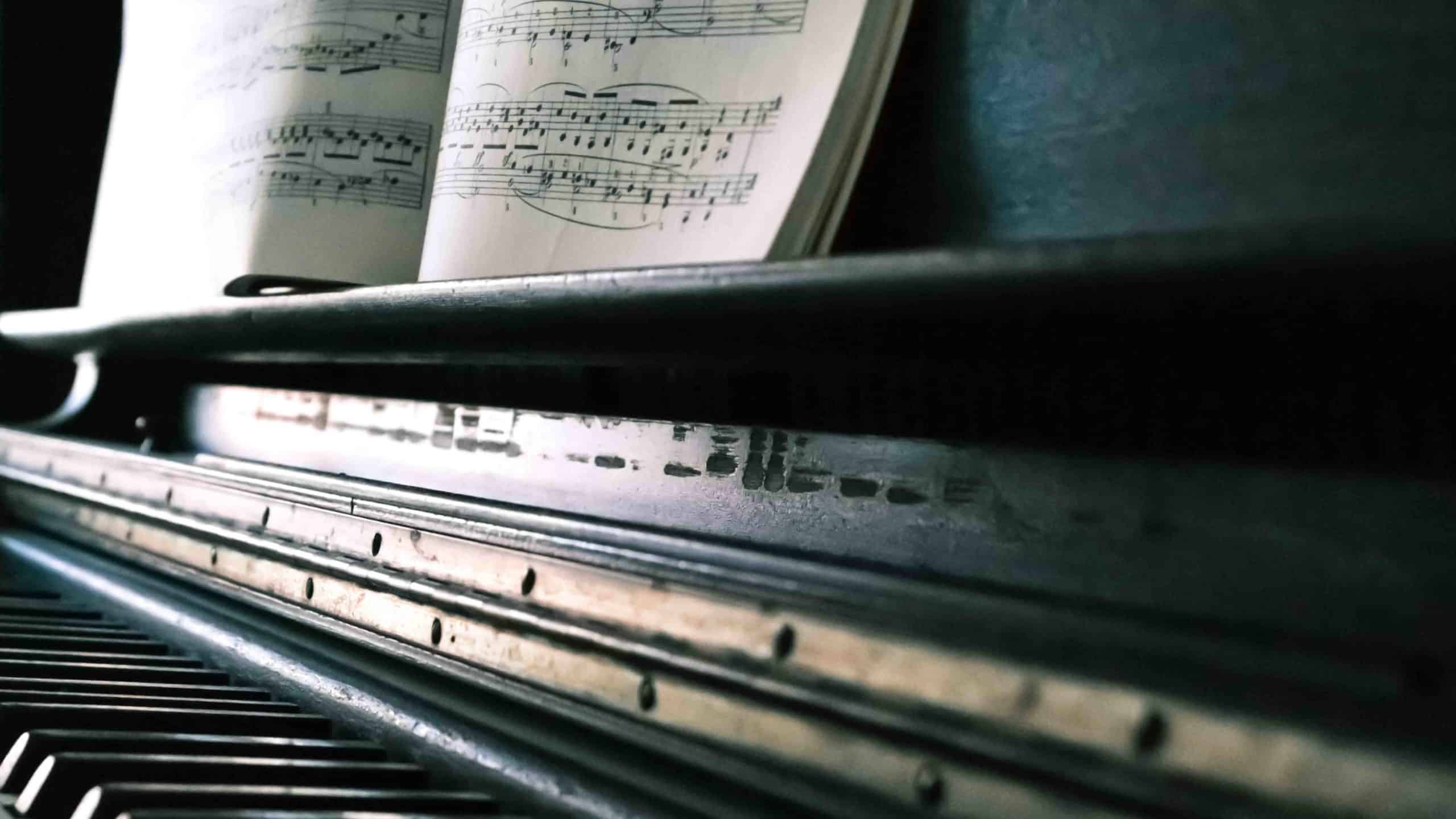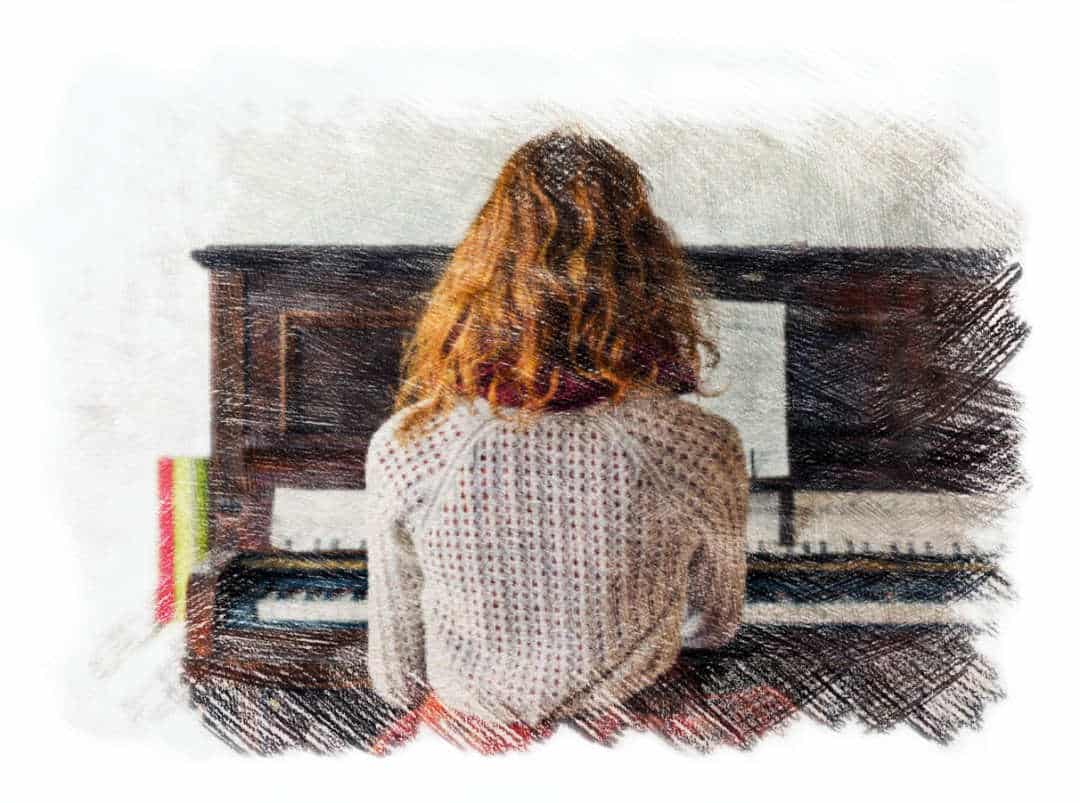Using Sight-Reading to Improve Your Concentration

Concentration in the 21st century
The ability to concentrate over a longer period of time is very important, both for individuals in order to achieve tasks properly and for humanity to make progress. Today, this importance has become very clear, as for the first time in the history of humanity, we are experiencing a decline in the ability to concentrate.
This collective decline in our ability to concentrate is one of the most unfortunate intellectual regressions of today’s society and one of the main reasons for the decline in mental energy among the general population. Today, children spend time with tablets and smartphones where their attention is forced to jump between different tasks every few seconds. While this can be fun, it is very unhealthy for the mind and is threatening our society with its inability to produce the kind of innovators, teachers, scholars, researchers and artists our society needs – those who are good at tasks that demand to concentrate on something for a long period of time. It is these kinds of tasks that are a major contributor to progress in our society. Electronic gadgets do not nurture the children’s ability to concentrate. Instead, during this critical time of life where their actions shape their future, they are set up to become adults who start their adult life with an attention span of a 5-year-old. Even college might be a problem. They will not have the sufficient concentration skills needed for learning properly in college. The amount of people in our society who know how to learn and to use their capabilities to the full extent is therefore bound to decrease.
In the 1950s, the philosopher Martin Heidegger predicted that a day would come where technology became so mesmerising and seductive to people that it would result in a deprivation of “meditative thinking”, a form of deep thinking which he viewed as one of the most essential human abilities. With some observations and analyses of our current average attention span, we can quite safely derive that his ominous prediction is more and more becoming a reality.
One of the reasons why this is dangerous is because you do not notice it when it is happening to yourself, especially not when you are at a very young age. For older children and adults, it is social media that has the most damaging effect on their attention span, also often without them noticing it.
By exposing yourself to situations that require you to concentrate fully, you can improve your ability to focus.
Pseudo-Concentration
People often mistake concentration with what we like to call pseudo-concentration. Pseudo-concentration can be described as a belief of having been continuously focused on a single task over a length of time. This belief occurs partly because of a generalisation of focus as a term. A lot of people claim they are concentrating on something continuously when they are in fact dipping in and out every 8 seconds. When reading, for example, the mind wanders on average between 20 and 40 per cent of the time.
This short-term attention span is called transient attention span. It is unclear among researchers whether our transient attention span can be improved. But it is possible to improve our sustained attention, which is the type of attention where we are focused on a single task over a length of time. The average sustained attention span is around 20 minutes. During those 20 minutes, hundreds of completely unrelated thoughts dip into our minds. We have to refocus multiple times. It is the ability to refocus on the task at hand which is the core skill that will make us better at concentrating continuously on a single task, and it is this ability that we can improve with sight-reading.
Pseudo-concentration can be a problem because we lose the sense of what real concentration is. This can stop us from believing that focus is a problem. Then we will carry on pseudo-concentrating in situations where real focus is crucial.
Using Sight-Reading to Improve Your Concentration
Practising sight-reading requires you to be focused and not to think about anything else while you are reading and playing the notes. Therefore, sight-reading can be a great concentration exercise, both for adults and for children. In order to make sight-reading into a concentration exercise, it is necessary for the tutor to be aware that one of the reasons for practising sight-reading is to train and slowly expand the student’s attention span. The main reason for practising sight-reading can still be to become a better sight-reader or musician, but a necessary tool for increasing your sight-reading skills is the ability to concentrate. By the tutor being aware of this, they will nurture concentration as a skill and for that reason improve the student’s ability to learn other subjects as well. Whether the students themselves should be aware that they are in fact practising concentration as a skill and not just sight-reading depends on their age and interest.
Young children will in most cases not be aware of what concentration specifically entails, so the amount of explanation required from the tutor is limited. They will instead do their best in creating an atmosphere of focus which I will explain soon.
At this stage, it is important that the children are regularly exposed to situations where they need to use their concentration. This will make them more used to being in this state from time to time and is important so that when they get older, they have a memory and a sense of what this state feels like. It is easier for them to understand the concept of concentration when they are older, and using this ability correctly will be a lot easier if they have been exposed to this state previously. Today, children are in danger of not being exposed enough to situations that requires them to focus. This could, in fact, result in a real difficulty in entering this stage later in life. We will try to prevent this from happening by including concentration exercises in the lessons.
Creating an Atmosphere of Focus
The Improve your sight-reading series by Paul Harris is a good way to practise concentration to begin with because the pieces are very short and do not require the student to keep their concentration for too long periods at a time.
If the tutor does the steps Harris has outlined at the beginning of the book and walks through this with the student, they are creating an atmosphere of focus. The task at hand is to try and play the piece as well as possible on the first try. If the teacher has made it explicit that this is the goal, it sharpens the student’s mind, and they have no choice but to let go of all thoughts and focus solely on playing the short piece.
Most people do not do these exercises as thoroughly and focused as outlined by Harris. The reason for this is that our brains are ultimately lazy and always look for ways to use as little mental energy as possible. It takes a great deal of mental energy to focus so intensely like this.
The hard truth is that in order to improve a skill at an accelerated rate, we need to be exposed to situations that consume our mental energy. If you do this regularly, you will be rewarded with the strongest weapon in the 21st century – The ability to truly concentrate.
The short sight-reading pieces should be easy enough so that the student has a chance of playing it all correctly, but difficult enough so that it takes a good amount of focus to play it through.
The moment when the student plays through the short piece should be kept almost sacred. Since we are aiming to improve the student’s concentration, we need to make it clear that complete focus has to be kept from the beginning to the end. Taking a couple of breaths before counting two bars in and start playing can be useful to enter this atmosphere of focus.
To make sure that this exercise is successful, the tutor needs to be very specific about what is going on and pick up on any small details that steal the student’s concentration. The state of mind that we are trying to achieve here is very similar to what happens when we are meditating. For that reason, it is advisable that the student tries some meditation to get a sense of what it should feel like to be in a state of complete focus.
The tutor should tell the student if they noticed a dip in concentration. If the student zoned out ever so slightly several times in the middle of the piece, it might help to choose a shorter piece or only play half of it at a time. Once the student can play through the whole of the piece without a break in concentration, they can move on to a slightly longer piece and continue with longer and longer pieces and this way expand their attention span and their ability to concentrate.
While they play, mistakes are allowed, but stopping, starting from the beginning, asking a question or anything else that breaks the spell of concentration should be avoided.
Attention span is like a muscle that gets stronger when you train it regularly, so doing this a little bit every lesson is important.
Something You Might Notice
If you are really observant of what is going on in your brain while you are sight-reading, you can tell if you are really concentrating or if you are simply practicing pseudo-concentration. If you catch yourself spending a lot of time looking at a note without remembering what it is, then later realising that it was in fact very simple, this might be a sign that your mind was drifting off for that moment. If you later analyse what you were thinking of during that short period, you might understand that you were not really concentrating. But that is completely fine because by realising this, you learn to distinguish between real concentration and pseudo-concentration, and with time, you are able to be more in control of this.
Using Your Concentration Skills for Other Subjects
One of the reasons why we are using sight-reading as a way of practising our concentration is so that we can use the concentration skills we acquire for other subjects than just sight-reading. To do this, it is important that the student does not associate concentration solely with playing their instrument. The core idea with applying this ability to other fields is to remember how you felt when you were doing these exercises with your instrument and then try to enter the same state or feeling when you do something else that requires concentration. To do this successfully, you need to try to use your concentration skills regularly in between these sight-reading exercises.



